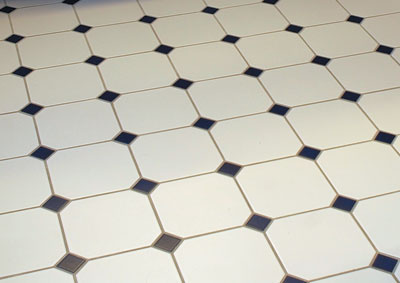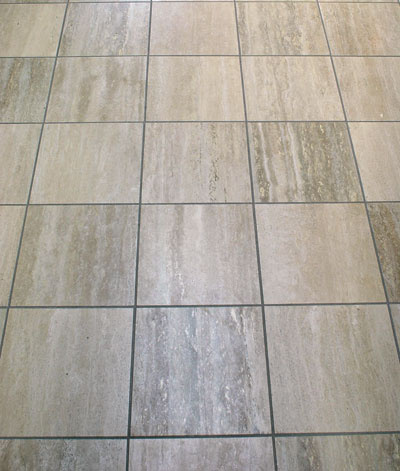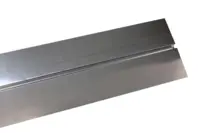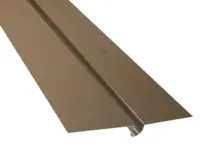- Forside
- Gode råd om gulv
- Gulvbelægninger
- Flisegulve
- Akustikpaneler
- Afpassede tæpper
- Bambusgulve
- Bordplader & bordben
- Designgulve
- Fliser og klinker
- BeefEater gasgrill
- Gode råd om gulv
- Gulvtæpper
- Gulvvarme
- Græstæpper
- Korkgulve
- Køkken, bad & garderobe
- Laminatgulve
- Linoleumsgulve
- Maling, Væv & Spartel
- Måtter
- Møbler & Boliginteriør
- Nålefilt og messetæpper
- Plejeprodukter
- Restpartier & gode tilbud
- Sildebensparket & Stavparket
- Tæppefliser
- Terrassebrædder
- Tilbehør
- Trægulve
- Vareprøver
- Vinylgulv
- Værktøj
- Øvrige produkter
- Loft- og vægpaneler
- Flotte gulve
- Fyrretræsgulv
- Klikgulve
- Bestilte varer
-
-26%
-
Populær29,00 DKK
-
29,00 DKK pr m2
-
Populær21,00 DKK
-
-59%39,00 DKK pr m295,00 DKKDu sparer: 56,00 DKK pr m2
Flisegulve
Alle informationer på denne side er kopieret materiale fra Gulvfakta som er et fagteknisk opslagsmateriale, Kilde: Gulvfakta
Ved flisegulve forstås gulve med belægning af keramiske fliser eller natursten. Keramiske fliser fremstilles af flere typer ler, kvartssand mv. som efter æltning og evt. tilsætning af mindre mængder hjælpestoffer og farvestoffer formes, tørres og sluttelig brændes. Naturstensfliser fremstilles af flere forskellige stenarter, fx marmor og granit. I det følgende benyttes kun betegnelsen fliser.
Du kan også se vores udvalg af fliser og klinker både til inde og ude.
1.6.0.1 Introduktion
1.6.0.2 Materialetyper
1.6.0.3 Generelle forhold
1.6.0.4 Lægning
1.6.0.5 Lægningsmetoder
1.6.0.6 Fuger
1.6.0.7 Vådrum
1.6.0.8 Gulvvarme
1.6.0.9 Rengøring
1.6.0.10 Checkliste ved valg af flisegulve
Alle informationer på denne side er kopieret materiale fra Gulvfakta som er et fagteknisk opslagsmateriale, Kilde: Gulvfakta
1.6.0.1 Introduktion
Flisegulve har udbredt anvendelse i boliger, industribygninger og andre steder hvor der kræves særlige egenskaber som fx stor robusthed, vandtæthed af konstruktionen eller let og effektiv rengøring. Fliser leveres i et stort antal formater fra mosaikstifter, (dvs. fliser med sidelængder under 100 mm.) til fliser i store formater på 500 x 500 mm. eller større. Tykkelsen er oftest 6-10 mm., men der findes såvel tykkere som tyndere fliser. Et flisegulv kan udføres med mange forskellige typer af produkter og i mange mønstre.
Denne sektion omtaler:
• Materialetyper
• Generelle forhold
• Lægning - Underlag
• Lægningsmetoder
• Fuger
• Vådrum
• Gulvvarme
• Rengøring
1.6.0.2 Materialetyper
Keramiske fliser
Keramiske fliser markedsføres i flere varianter både med og uden glasur og i mange forskellige farver herunder med påførte motiver.
Fliserne kan opdeles efter deres produktionsmåde i:
• Vådpressede, som fremstilles ved extrudering af en forholdsvis fugtig blanding.
• Tørpressede, som fremstilles ved at en forholdsvis tør blanding presses i forme under højt tryk. En speciel type af tørpressede fliser er kakler/fajancefliser, der fremstilles ved en speciel sammensætning af råstofferne (stort kaolin indhold). Generelt er tørpressede fliser mere målfaste, stærkere og mindre vandabsorberende end de vådpressede. Fajancefliser er dog forholdsvis vandabsorberende. For at give bedre gangsikkerhed kan flisernes overflade udføres nupret eller med forskellige prægninger.
Flisernes egenskaber bestemmes af lerblandningens sammensætning, brændingstemperaturen og om hvorvidt flisen er glaseret eller ej. Generelt vil højere brændingstemperatur resultere i de tætteste og dermed mindst vandsugende fliser. De hårdest brændte fliser som er karakteriseret ved at have en hård skærv, og ved at være klangfulde når man slår dem sammen, betegnes også klinker. De har større rumvægt og styrke og mindre porevolumen end de øvrige fliser. Særligt hårdtbrændte (stentøjs) fliser betegnes porcellanato eller granito fliser. De udmærker sig ved at have særlig lav vandabsorption og er derfor velegnede på steder hvor der forventes stor vandpåvirkning.
 Fig. 1. Keramiske fliser
Fig. 1. Keramiske fliser
Naturstensfliser
Naturstensfliser markedsføres i et stort antal stenarter som kan leveres med forskellig bearbejdning af overfladen, fx følgende:
• Slebet - der gradueres mellem grov og fin. Overfladens struktur angives ved kornstørrelsen af det slibemiddel der er anvendt.
• Poleret.
• Kløvet - dvs. spaltet efter naturlige brudlinjer i stenen.
• Jetbrændt - dvs. en termisk behandling af overfladen.
De vigtigste natursten til gulvbelægninger er de hårde typer som granit og nordiske kvartsit-skifer typer, blødere sedimentære typer som kalksten og sandsten samt marmor.
Granit er betegnelsen for en hård magmatisk bjergart, dvs. dannet ved afkøling af smeltet magma. Inden for stenindustrien benyttes betegnelsen granit også for enkelte bjergarter, som geologisk set ikke er granitter. Ekstremt høje tryk kan omdanne granitten til en såkaldt metamorf bjergart, som undertiden har et mere stribet udseende. Den korrekte betegnelse for denne bjergart er (granitisk) gnejs, men i daglig tale benyttes dog stadig betegnelsen granit.
Sandsten er en sedimentær stenart. Sandsten dannes ud fra løst kvartssand, dvs. ren kvarts, som kan være sammenkittet af kvarts eller calcit. Er stenen sammenkittet med kvarts fås en solid og slidstærk sten, mens sammenkitning med calcit, dvs. en kalkbundet sandsten, giver mindre styrke.
Kalksten er en sedimentær stenart. Kalksten består som regel af sammenkittede skaller eller skeletter fra levende organismer, dvs. de fremherskende mineraler er som oftest calcit og dolomit. Karbonatmineralerne opløses ganske langsomt i sure omgivelser, fx ved påvirkning fra visse rengøringsmidler.
Marmor er en metamorf bjergart dannet af kalksten som har været udsat for tryk- og temperaturpåvirkning. Marmor kan på grund af indhold af forskellige mineraler variere meget i farve.
Basalt er mørke til sorte magmatiske bjergarter. Basalt er langt den mest udbredte bjergart i jordskorpen og danner hovedparten af oceanbunden og findes desuden i store områder af Indien, Sydamerika, Grønland, Island mv. Basalt er tæt og finkornet, men er ofte sprækket og vanskelig at udnytte.
Skifer dannes ved hærdning af ler. Først dannes skiferler, som ved overlejring af efterfølgende lag udsættes for trykpåvirkning, hvorved skiferleret omdannes til lerskifer. En afgørende forskel mellem skifer og kalksten/marmor er skifers evne til at kløve i en bestemt retning. Skifer leveres ofte med kløvet overflade, men kan dog normalt også leveres matsleben.
Kvartsitskifer er betegnelsen for skiferlignende kvartsrige sandsten, som på grund af et højt indhold af glimmer er spaltelige ligesom skifre.
 Fig. 2. Naturstensfliser
Fig. 2. Naturstensfliser
1.6.0.3 Generelle forhold
Fliser har meget forskellige egenskaber bl.a. afhængigt af materialesammensætningen og for keramiske flisers vedkommende, produktionsmetode og brændingstemperatur. Fliser skal derfor vælges så deres egenskaber passer til den påtænkte brug. Flisegulve kan betragtes som brandmæssigt egnede klasse G gulvbelægninger. Gangkomforten og trinlyddæmpningen af flisegulve er ringe idet fliser og deres underlag sædvanligvis består af hårde materialer.
Flisegulve har stor varmeledningsevne og varmekapacitet (varmeakkumuleringsevne). De kan føles kolde at gå på, fordi varmen ledes hurtigt væk fra foden. Generelt kan fliser i sig selv betragtes som temmelig resistente overfor påvirkning af kemikalier. Dog skal der udvises agtpågivenhed ved basalt og kalkbundne natursten, herunder marmor, der ikke kan tåle sure kemikalier, fx sure rengøringsmidler. Fugerne i flisegulve er derimod normalt ikke resistente overfor kemikalier så hvis der er krav om kemisk resistens, skal der anvendes særlige fugemørtler. Den planhed der kan opnås af et flisegulv afhænger af underlagets planhed, om fliserne leveres kalibrerede, dvs. med samme tykkelse overalt, og af overfladeplanheden af de enkelte fliser. Tolerancerne vil normalt ligge på ± 2 til ± 3 mm på et 2 m retholt.
Hertil kommer at fugerne kan afvige i niveau fra selve flisens overflade. På grund af tolerancerne skal det normalt undlades at udføre flisegulve vandrette i vådrum mv., da dette kan medføre forekomst af lunker og dermed risiko for at vand vil kunne stå på gulvet. Gulve af keramiske fliser vil normalt ikke blive overfladebehandlet, mens visse natursten behandles for at hindre nedtrængning af fedt og snavs og for at få en mere rengøringsvenlig overflade. Der henvises til leverandørens vejledning for det aktuelle produkt. Fliser benyttet som gulvbelægning i vådrum skal kunne tåle påvirkning af vand og høj luftfugtighed. Flisebelægninger er sædvanligvis ikke vandtætte i sig selv og for vådrum mv. må der derfor suppleres med en vandtæt membran under flisebelægningen hvis der benyttes underlag af krydsfiner eller andet fugtfølsomt materiale.
Keramiske fliser som er EN-klassificeret skal i henhold til EN 87 (Keramiske gulv- og vægfliser - Definitioner, klassifikation og mærkning) opfylde specifikke krav til dimensioner og overflade kvalitet prøvet i henhold til EN ISO 10545-2 (Ceramic tiles - Determination of dimensions and surface quality).
Desuden klassificeres fliser efter fremstillingsmetode og vandabsorption. For sidstnævnte anvendes klasserne:
Fliser til gulve bør normalt ikke have større vandoptagelse end 10%. Til vådrum med gulvvarme bør vandoptagelsen være under 6%.
Bestemmelse af øvrige egenskaber sker i henhold til EN ISO 10545 part 3 til 17. Egenskaberne omfatter:
• Prøveudtagning.
• Brudstyrke.
• Lineær termisk udvidelse.
• Modstandsevne mod termisk chok.
• Modstandsevne mod krakelering.
• Modstandsevne mod kemikalier.
• Slidstyrke.
• Frostbestandighed.
• Fugtudvidelse.
• Afgivelse af bly og cadmium.
• Gangsikkerhed.
• Farveafvigelse.
Hårdhed (Mohs skala) prøves efter EN 101. Beskrivelse af fliser inden for de enkelte klasser findes i EN 121, EN 159, EN 176, EN 177, EN 178, EN 186, EN 187 og EN 188. Disse standarder indeholder også de krav der stilles til ovennævnte egenskaber. Der bør så vidt muligt benyttes fliser fra samme batch med samme nuancenumre for at sikre et ensartet udseende. En del fliser - især hårdtbrændte porcellanato (stentøj) - føres i forskellige calibernumre, dvs. fliserne sorteres efter brændingen efter størrelse i millimeter, hvilket sikrer, at de kan anvendes sammen, hvor der ønskes fugeforløb eller hvis det ønskes at blande forskellige formater eller farver. Ved projekteringen bør valg af fliser og fastlæggelse af konstruktionsopbygning ske i overensstemmelse med gulvets forventede funktion og deraf følgende brugspåvirkninger.
Der bør i forbindelse med modtagekontrol kontrolleres at leverancen er korrekt med hensyn til type, formater, farve (nuancer) og calibre. Reklamation over forkert leverance vil generelt ikke blive taget til følge efter montering. Leverancen må ikke være fejlbehæftet, dvs. pakkerne skal være uskadte og de enkelte fliser hele med ubeskadigede kanter etc.
1.6.0.4 Lægning
Underlag
Et flisegulv skal understøttes i fuld flade af et bærende undergulv. Da fliser er uelastiske må undergulvet ikke få nævneværdige deformationer, og det skal derfor have stor stivhed og dimensionsstabilitet for at hindre revnedannelse. Undergulvet skal dimensioneres efter den last der forventes, herunder skal der tages hensyn til rullende trafik; der må i denne forbindelse også stilles krav til bøjestyrken af fliserne.
Der kan benyttes mange forskellige materialer som underlag for flisegulve:
• Beton, letbeton, afretningslag (mørtel), anhydrit mv.
• Træplader, gipsplader.
• Gamle fliser eller terrazzo.
Beton og afretningslag svinder under hærdningen og vil derved påvirke flisebelægningen så der opstår trykspændinger i fliserne. Svindet afhænger af betonsammensætning, lagtykkelse, temperatur og fugtforhold. Betonens svind udvikles kraftigst i den forholdsvis unge beton og fliselægning bør derfor udføres så sent i byggeprocessen som muligt.
I praksis kan svindet for normalthærdende cementtyper ved en temperatur på ca. 20°C regnes at være overstået efter 4-8 uger afhængigt af betonsammensætning, temperatur mv. Tiden mellem udstøbning og fliselægning kan eventuelt reduceres ved at anvende cementtyper som har et hurtigere hærdningsforløb, fx har cementtyper med imalet kalkfiller generelt et hurtigere hærdningsforløb end normalthærdnende cementtyper. De bedste hærdningsbetingelser opnås ved at afdække betonen med tætsluttende plastfolie straks efter udstøbningen og bibeholde afdækningen i mindst 3 døgn.
Ved anvendelse af plastfolie i stedet for curing-membraner opnås der de bedste betingelser for senere vedhæftning af afretningsmørtel, fliseklæb mv. Underlag af anhydrit skal være tørt - vedr. måling af fugtindhold se kap 2. Inden lægning af fliser skal overfladeslam afslibes og efterfølgende skal overfladen primes i henhold til lægningsanvisningerne fra leverandøren af fliseklæberen. For undergulve af anhydrit, gips- og træplader må der ikke være risiko for fremtidig fugtpåvirkning, dvs. sådanne underlag bør kun anvendes i tørre omgivelser.
Undergulv af træplader skal til brug for fliser være med mindre understøtningsafstand end til fleksible gulvbelægninger, fx kan det udføres af 19 mm. konstruktionskrydsfiner eller 22 mm. gulvspånplader med understøtningsafstand på 300 mm. Gipsplader skal udføres med understøtning i henhold til leverandørens anvisninger. Bemærk at i vådrum er der specifikke krav til underlaget, hvilket bl.a. betyder, at der ikke må anvendes spånplader eller gipsplader som underlag for fliser.
Ved lægning af fliser ovenpå et eksisterende flisegulv skal de eksisterende fliser være fastliggende og rene. Lægningen skal ske i nøje overensstemmelse med anvisningerne fra leverandøren af fliseklæberen, herunder skal overfladen primes inden lægning hvis leverandøren foreskriver det. I vådrum skal gulvafløb ifølge afløbsnormen føres ubrudt frem til gulvets overflade, og eksisterende flisebelægninger kan derfor ikke umiddelbart bibeholdes uden at afløbet udskiftes (eller forhøjes med et VA-godkendt forhøjelsesstykke). Bemærk at gulvafløbets risteramme betragtes som en integreret del af afløbet og derfor ikke må ligge adskilt fra den øvrige del af afløbsskålen. Udlægning af fliser på svømmende undergulve bør kun ske når undergulvet består af fugtstabile materialer, fx beton. For at opnå nødvendig vedhæftning skal underlag være sammenhængende og med tilstrækkelig styrke samt fuldstændig rent og uden cementslam. En mekanisk rengøring kan være nødvendig.
Afretningslag på glidelag
Afretningslag for fliser kan udføres på glidelag af lydtekniske årsager eller for at reducere effekten af dimensionsændringer i undergulvet. Glidelaget kan fx bestå af 2 lag 0,15 mm plastfolie, eller et lag geotextil og et lag plastfolie, der udlægges mellem undergulv og afretningslag. Det er en forudsætning at undergulvet er helt plant og uden grater så glidelaget ikke ødelægges. Traditionelt udføres afretningslag af cementmørtel, som skal have en mindste tykkelse på 50 mm, mens der med specialmørtler kan anvendes tykkelser ned til 35 mm.
1.6.0.5 Lægningsmetoder
Tidligere var det nødvendigt at lægge fliser i mørtel. Tykkelsen af fliserne varierede og derfor skulle der anvendes et forholdsvis tykt mørtellag. I dag er der et stort udvalg af fliseklæber så der nu er langt flere muligheder for at vælge lægningsmetode. Der kan skelnes mellem lægning med fliseklæber (tyndlagsmetoden) og lægning i mørtel (mørtelmetoden). Inden lægning af fliser slukkes eventuelt gulvvarmeanlæg mindst 3 døgn før lægningen og det må tidligst tændes igen 3 uger efter lægningen.
Fliser
Før lægning spredes et antal fliser - gerne ca. 3 m² - ud på gulvet for at sikre et æstetisk tilfredsstillende resultat. Ved lægningen blandes fliser fra forskellige pakker/kasser. Disse forholdsregler er især vigtige for fliser hvor der kan forventes farvenuancer, fx hvor der er anvendt naturfarver. Fliserne må ikke gøres våde før lægningen. For natursten kan evt. opfugtning medføre at fliserne krummer efter lægningen - medfører "brødskorpe" på overfladen.
Fliseklæber
Fliseklæber (tyndlagsmetoden) er anvendelig til plane underlag og fliser med ensartet tykkelse. Underlaget skal normalt have en planhed svarende til en tolerance på ± 2 mm på et 2 m. retholt. Er underlaget for ujævnt må det oprettes enten med en mørtel/spartelmasse som er tilpasset underlaget, eller med en pladebeklædning som er egnet til formålet. Ved tyndlagsmetoden anvendes en fliseklæber som normalt er cementbaseret, og som kan være tilsat plastificeringsmidler og kunststofbindemidler (dispersionsvæsker fx på basis af akryl), for at forbedre vedhæftning, tæthed, fleksibilitet mv.
Der bør anvendes produkter fra samme leverandør til alle deloperationer, hvilket giver størst sikkerhed for at materialerne kan anvendes sammen, ligesom det er en fordel af hensyn til eventuelle garantier eller reklamationer. Valg af fliseklæber, primer mv. skal ske afhængigt af den aktuelle flise og især det aktuelle underlag, som kan have forskellige egenskaber med hensyn til deformationer som følge af svind og temperatur- og fugtvariationer. For underlag af træbaserede pladematerialer er det især vigtigt at tage hensyn til fugtbevægelser, mens det for beton især er vigtigt at tage hensyn til svind, dvs. betonens sammensætning og især dens alder.
Til lyse stenmaterialer, fx marmor, bør der anvendes lys/ hvid fliseklæber da der kan ske gennemskin af farven fra underlaget. Hvis marmor kan misfarves af fugt eller på grund af indhold af jernforbindelser, bør der anvendes en hurtighærdende fliseklæber ved lægningen. Grøn marmor kan være særlig problematisk og det anbefales, at lægning sker i nøje overensstemmelse med anvisningerne fra såvel flise- som klæberleverandør. Ved lægningen skal temperaturen være mindst 10°C. Efter lægning må gulvet ikke udsættes for hurtig udtørring, fx fra stærk sol, træk eller varmekanon. Det er vigtigt at der anvendes den korrekte mængde fliseklæber afhængigt af underlaget, flisen og den valgte klæbertype. For lidt klæber vil medføre dårlig udfyldning og mangelfuld dækning og risiko for dårlig vedhæftning. For meget klæber medfører risiko for dårlig planhed af den færdige gulvoverflade og at klæberen trænger op i fugerne under lægningen.
Forbruget af klæber reguleres ved hjælp af den tandstørrelse, der vælges på tandspartlen. Der kan vælges mellem tandspartler med kvadratiske tænder eller halvrunde tænder. Med kvadratiske tænder vælges spartelstørrelsen efter flisens ujævnhed mens der for halvrunde tænder vælges efter den totale ujævnhed af underlag og flise. Floating/buttering som betyder, at der påføres klæber både på underlag og flise, benyttes ved meget store fliser, udendørs, til svømmebassiner og lignende steder hvor det er vigtigt at der ikke er luftblærer i limlaget.
Der er ingen faste regler for hvor stor mængde fliseklæber der er nødvendig, men der kan gives følgende retningslinjer for valg af tandspartel:
Som eksempel på forbrug kan nævnes at med tandstørrelse 10x10 mm. bliver forbruget normalt ca. 4,5 kg/m² og med 3x3 mm tandspartel ca. 1,6 kg/m².
Fliseklæber må ikke påføres på større arealer end at fliserne kan lægges inden lægningsmørtlen danner hud, idet dette vil medføre forringet vedhæftning. Er der dannet hud må fliseklæberen udskiftes med frisk klæber.
Mørtelmetoden eller tykfilmsmetoden
Mørtelmetoden er anvendelig også på ujævne underlag og fliser med uensartet tykkelse. Nedestående er en generelbeskrivelse af metode og produkter.
Ved konkret produktvalg henvises til leverandørernes anvisninger. Vedhæftningen til underlaget skal være god og der må være sikkerhed for, at der ikke sker nævneværdige deformationer af underlaget. Det kan derfor være nødvendigt at oprette underlaget før lægning af fliserne udføres, ligesom eventuelt fald i gulvet bør være udført i underlaget. Før lægning vandes underlaget og holdes fugtigt i ca. 1 døgn. Umiddelbart før lægningsmørtlen påføres overkostes underlaget med cementvælling C 100/100 eventuelt tilsat betonklæber. Der må ikke udføres større arealer end at cementvællingen hele tiden er fugtig.
Lægningsmørtlen bør være en C 100/400 til C 100/500. Den bør være så stiv som muligt og udlægges og komprimeres i den rette tykkelse, så der kan opnås fuld kontakt mellem flise og mørtel. Når lægningsmørtlen er udlagt hældes et tyndt lag cementvælling C 100/100 ud på overfladen, hvorpå flisen nedlægges og bankes på plads. De bedste hærdningsbetingelser opnås ved at afdække fliserne med plastfolie de første 2 døgn efter lægningen, eventuelt suppleret med et lag fugtige sække mellem fliser og plastfolie.
1.6.0.6 Fuger
Fuger er en væsentlig del af et flisegulv. Fugerne skal ideelt set være i stand til at optage de samme påvirkninger som selve flisen og skal støtte flisekanterne. De skal desuden kunne fordele de kræfter der optræder i gulvet, så der ikke opstår store lokale spændingskoncentrationer, der kan medføre skader. Almindeligvis benyttes cementbaserede fugemørtler. Til specielle formål findes der specialprodukter, fx syrefaste eller fleksible fugemørtler. Fugebredden kan variere mellem 0 og 25 mm og vælges efter de krav gulvkonstruktionen stiller samt format, tolerancer, rustikalitet af overfladen af de anvendte fliser samt af hvilket udseende, der ønskes af gulvet. Ofte anvendes de bredeste fuger til store og rustikke fliser. Skal gulvet lægges med knasfuge, dvs. tæt sammen så fugen ikke skal udfuges, kan det eventuelt slemmes efter lægningen, og for naturstensflisers vedkommende vandslibes. Det anbefales at bruge fliser med svagt affaset kant til gulve med knasfuge for at undgå at kanterne knækker af og så der ikke opstår skarpe kanter på gulvoverfladen.
Fugning
Fugning bør normalt tidligst ske 1-3 døgn efter fliselægning afhængigt af lægningsmetode/klæbertype og underlag. Før fugning fugtes fugerne let med en svamp dog uden at der står blankt vand i fugerne. For fliser lagt i fliseklæber benyttes normalt specielle fugemørtler, som kan være afpasset efter den anvendte flisetype med hensyn til farve, "grovhed" mv. Også fliser lagt i mørtel kan fuges med fugemørtel, men udfugning kan også ske på traditionel vis, fx med cementmørtel C 100/100. Til visse industrigulve og andre specielle anvendelser kan det være nødvendigt at fuge med specialmørtel, fx på epoxybasis. Det bør så vidt muligt undgås at vælge mørke fuger til helt lyse gulve af hensyn til risikoen for afsmitning af farvestof til flisen. Mindre variationer af fugens farve og overfladestruktur kan forekomme på grund af forskellig sugeevne af fliser og underlag. Gulvet bør tidligst tages i brug 2-3 døgn efter fliselægningen.
Dilatationsfuger
Der skal indlægges dilatationsfuger i tilstrækkeligt omfang til at hindre, at der opstår skader på gulvet på grund af deformationer i konstruktionen eller uens bevægelser af belægning og underlag. Placering og udførelse af dilatationsfuger fastlægges normalt under projekteringen. Normalt skal dilatationsfuger gå helt igennem konstruktionen, inklusive afretningslag mv. Hvor der kun forventes små bevægelser, fx i afgrænsede arealer over bjælker etc., er dilatationsfuger i selve flisebelægningen dog tilstrækkelig. Dilatationsfuger udført som fugemassefuger bør som hovedregel være 10-15 mm bredde. Dilatationsfuger skal være fri for fliseklæber/mørtel i hele tværsnittet og der bør anbringes et hæftebrydende fugeunderlag eller en sliptape i bunden af fugen. Som fugemateriale anvendes en elastisk fugemassefuge, fx MS-polymer eller silikone, der i vådrum bør være tilsat et fungicid (algedræbende middel). Ved vægge og søjler etc. kan fugebredden eventuelt reduceres.
I industrigulve, svømmebade og storkøkkener kan der være særlige krav, fx om skridsikkerhed, som bør kunne dokumenteres af leverandøren. I forbindelse med naturstensgulve kan anvendelse af fugemassefuger baseret på olieprodukter i nogle tilfælde medføre indtrængning af olie/farvestoffer i flisen. Der bør søges oplysninger hos leverandøren om hvorvidt anvendelse af aktuelle produkter er forbundet med risiko i denne henseende. Hvor der forventes større bevægelser eller hvor flisernes kanter skal forstærkes omkring fugen på grund af store belastninger, kan der benyttes specielle fugeprofiler, som sædvanligvis er udført i metal med indlagte gummiprofiler.
Dilatationsfuger bør som hovedregel udføres efter følgende retningslinjer:
• Største rektangulære areal uden dilatationsfuger ca. 35 m².
• Maksimal afstand mellem dilatationsfuger ca. 7 m. - denne afstand reduceres i forbindelse med gulvvarme til 5 m.
• Ved dilatationsfuger eller støbeskel i den bærende konstruktion skal der også udføres dilatationsfuger i flisebelægningen inklusive eventuelt afretningslag. m.
• Det skal fremgå af beskrivelse eller tegninger, hvor der kan forekomme nedbøjning af gulve og derfor skal der etableres dilatationsfuger, fx hvor dækelementer er udlagt på bjælker der er stivere end dækelementerne selv.
• Hvor kun dele af et større gulvareal er belagt med fliser bør dette afgrænses med dilatationsfuger mod tilgrænsende gulve.
• Hvor dilatationsfuger er nødvendige skal der også udføres dilatationsfuger (isolationsfuger) mod tilgrænsende vægge, søjler og lignende.
• Dilatationsfuger udført som fugemassefuger skal udføres med hæftebrydende fugeunderlag eller sliptape.
1.6.0.7 Vådrum
I vådrum skal flisegulve udføres efter de retningslinjer, der er angivet i Statens Byggeforskningsinstituts anvisninger på området, dvs. SBi Anvisning 252 "Vådrum" samt SBI-anvisningerne 180 og 189. Hvis gulvet udføres som en let konstruktion, dvs. med undergulv af konstruktionskrydsfiner, skal der altid udføres en vandtæt membran, som skal føres mindst 100 mm op ad alle tilstødende vægge. Vandtætningssystemet skal udføres som anvist i ovennævnte publikationer og i nøje overensstemmelse med fliseklæbleverandørens MK-godkendelse. Hvis gulvet udføres på uorganisk underlag, fx et betondæk, kan fliser lægges direkte på dækket. Det anbefales dog at der altid udføres en vandtæt membran især i de mest vandbelastede dele af rummet, fx i og omkring brusenichen.
1.6.0.8 Gulvvarme
Gulvvarmeanlæg er velegnede i forbindelse med flisegulve og vælges dels for at opnå bedre komfort dels for at undgå radiatorer.
Ved anvendelse af gulvvarmeanlæg er der to forudsætninger, der skal være opfyldt:
Temperaturen skal være lav - normalt bør overfladetemperaturen ikke overstige 27-29°C. Temperaturfordelingen under fliserne skal være jævn, dvs. varmerør eller kabler skal anbringes, så der ikke er større variationer i overfladetemperaturen. En jævn temperaturfordeling opnås billigst ved indstøbning af varmerør eller varmekabler i et beton- eller afretningslag. Over rør eller kabler bør der være en betontykkelse på mindst 30 mm. for at opnå en jævn fordeling af temperaturen. Alternativt kan gulvvarmeanlægget udføres med varmemåtter eller varmefolier, hvorved overstøbningens tykkelse kan reduceres. Bemærk at udførelse af gulve med elvarme kun må ske i enkeltrum i forbindelse med renovering eller i sommerhuse.
Med gulvvarme er det vanskeligt at regulere varmeafgivelsen hurtigt på grund af betongulvets termiske inerti, som medfører at tidskonstanten for gulve af denne type er ca. 12 timer. På gulve udført af træbaserede plader bør gulvvarmeanlæg kun bruges i forbindelse med udlægning af et afretningslag udlagt på glidelag, fx af 2 lag 0,15 mm. plastfolie. Dette skyldes at træplader får store dimensionsændringer ved udtørring og opfugtning, hvilket kan få fliserne til at revne. Gulvvarmeanlæg bør være forsynet med egen varmekreds og automatik til begrænsning af temperaturen under gulvet. Overfladetemperaturen begrænser den effekt, som et gulvvarmeanlæg kan yde.
Vejledende kan der regnes med, at gulvvarmeanlæg kan afgive en effekt, som kan beregnes i henhold til nedenstående formel:
Afgiven effekt = 11 x (tg - tr) W/m².
Hvor "tg" er gulvets overfladetemperatur og "tr" er rumtemperaturen, hvor de almindeligst forekommende overfladetemperaturer svarer til de i tabel 1 viste værdier.

Tabel 1. Afgiven effekt for flisegulve for almindeligt forekommende overfladetemperaturer ved rumtemperatur 21°C.
Til sammenligning kan det oplyses at energibehovet for nye enfamiliehuse isoleret efter BR-S 98 er 45 W/m². Opvarmning med gulvvarmeanlæg kan derfor forventes at være tilstrækkelig i nye, velisolerede bygninger. Ved renoveringsopgaver må der som hovedregel regnes med at der skal være supplerende varmeforsyning udover gulvvarmeanlægget, fx i form af radiatorer. Dette skyldes at isoleringen i ældre huse normalt er ringere end de i dag gældende krav, og at effektbehovet tilsvarende er større. Generelt må der forventes et større energiforbrug ved anvendelse af gulvvarmeanlæg end ved radiatorsystemer. Det er baggrunden for at der i BR-S 98 stilles skærpede isoleringskrav til terrændæk, kældergulve mod jord og etageadskillelser (over det fri eller over ventileret kryberum) med gulvvarme.
1.6.0.9 Rengøring
Rengøring Inden ibrugtagning foretages en grundrengøring for at fjerne rester af fugemørtel/kalkslør fra belægningens overflade. De fremtidige brugere skal oplyses om korrekt rengøring da forkert rengøring kan medføre skader på overfladen. Til daglig rengøring kan anvendes tørre metoder, dvs. tøreller fugtmopning eller støvsugning. Til kraftigere rengøring anvendes såvel alkaliske som sure rengøringsmidler. Dog skal der ikke anvendes sure rengøringsmidler på basalt, marmor og andre kalkbaserede natursten idet dette vil nedbryde overfladen. Endvidere vil de fleste fugemørtler være cementbaserede og de kan derfor ikke tåle kraftig eller langvarig påvirkning af sure rengøringsmidler.
Endelig kan flisegulve rengøres ved skumrengøring under forudsætning af at de er lagt på uorganisk underlag og at fliseklæber og fugemørtel kan tåle det. Rengøring ved trykspuling bør kun ske i yderst begrænset omfang, med moderat tryk og kun når der er benyttet materialer som leverandørerne betegner som egnede til formålet.
1.6.0.10 Checkliste ved valg af flisegulve
• Forhold vedrørende opbygning, materialevalg, placering og udførelse af dilatationsfuger mv. skal være afklaret inden lægningen påbegyndes.
• Bygningen skal være lukket og før udlægning på træplader skal varmeanlæg være sat i gang og bygningen være i fugtmæssig ligevægt med omgivelserne.
• Leverandøranvisninger skal foreligge på byggepladsen.
• Ved lægning med fliseklæber bør der anvendes materialer (flisesystem) fra samme leverandør.
• Underlag af beton eller mørtel skal være velhærdet og hovedparten af svindet skal være overstået.
• Gulvvarmeanlæg slukkes mindst 3 døgn før lægningen og det må tidligst tændes igen 3 uger efter lægningen.
• Temperaturen skal være mindst 10°C. Lavere temperaturer forlænger hærdningstiden for afretningslag, fliseklæber og fugemørtel.
• Fugtindholdet i træplader skal være under 13%.
• Underlag skal være faste, rene, tørre og fri for grater, lunker, støbeslam mv. Om nødvendigt må der ske en afrensning og/eller opretning af overfladen.
• Fliseklæber, fugemasse og andre hjælpestoffer bør temperaturmæssigt akklimatiseres i mindst et døgn før brug, fx ved opbevaring i de rum hvori de skal bruges.

















